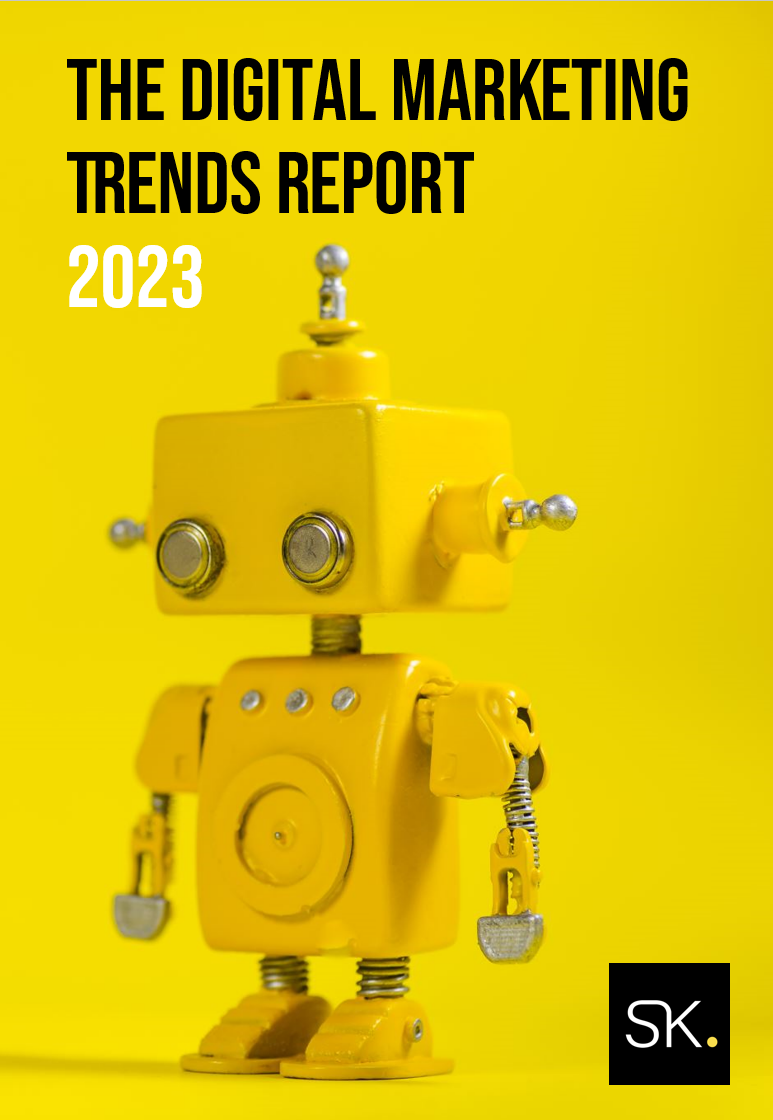In the age of information overload, capturing attention and building lasting connections with consumers is a constant struggle for marketers. We’ve long known the power of storytelling – narratives that resonate emotionally leave a deeper impression than a barrage of dry product specifications. Storytelling has transcended from a mere marketing tactic to an essential art form.
Marketers and digital innovators are constantly seeking new ways to create immersive narratives for their audiences. This is where Augmented Reality (AR) steps in, offering a revolutionary way to weave captivating stories into your marketing strategy across all segments.
This evolution from traditional ads to full-fledged experiences is reshaping the marketing landscape, providing new opportunities to captivate and convert customers.
The Power of Storytelling in Marketing
Humans are hardwired for stories. From cave paintings to campfire tales, stories have always been a way to share knowledge, forge connections, and evoke emotions. Neuroscience backs this up – stories trigger the release of oxytocin, the hormone associated with trust and bonding.
Human connection is at the core of storytelling, with the ability to create a common experience and foster an emotional bond. Stories in marketing evoke feelings of trust and brand loyalty, traits that are invaluable in today’s cluttered digital noise.
Data supports the claim that narratives outperform traditional advertising in both recall and persuasion metrics. An engaging story has the power to make your brand memorable for all the right reasons.
Storytelling is such a powerful tool in marketing. A well-crafted story can:
-
Build Brand Identity: Stories help you define your brand values, mission, and personality.
-
Connect with Emotions: Stories create empathy and emotional connection with your target audience.
-
Increase Brand Recall: Stories are more memorable than dry facts and figures.
-
Drive Action: A compelling story can motivate users to learn more, engage with your brand, or make a purchase.
Studies by [source: Neuroeconomics: The Decision Making Process] show that storytelling can increase brand recall by 26% and purchase intent by 34%.
The Challenge: From Passive to Active Consumption
Consumers no longer wish to be passive observers; they seek participation and interactivity. This shift in consumer behavior—from passive to active consumption—is a challenge and an opportunity for the marketing industry. Traditional ads are often ignored, but an interactive story, particularly one employing AR, can turn a user’s surroundings into a digital playground.
The Rise of Ad Aversion
Ad blockers and the general disdain for traditional advertising underscore the need for a different approach. Interactive experiences with AR can rekindle interest and make advertising fun and valuable for the consumer.
Craving for Authentic Interactivity
Consumers in the digital era crave authenticity and real experiences. AR not only provides a new sense of interactivity but also bridges the gap between the digital and physical worlds, creating experiences that feel more real.
Enhancing Storytelling with Augmented Reality (AR)
AR bridges the gap between the physical and digital worlds, overlaying computer-generated content onto the real world through a smartphone or tablet camera. Imagine pointing your phone at a magazine ad and seeing a 3D product come to life, or scanning a product in-store to access interactive tutorials and hidden information.
With AR, brands can present products in a new light, quite literally, by overlaying digital content onto the physical world. The applications for AR are vast, and its potential for storytelling is limitless. AR allows for creativity to flourish, with brand stories coming to life in 3D, inviting users to interact with them in real-time.
AR: The Engaging Technology
AR is not just a tool for enhanced presentation; it is an engaging technology that immerses users in a new reality, where they can play an active role in the brand story.
Creating Immersive Experiences
Immersive experiences are memorable experiences. In the competitive marketing environment, where capturing and holding attention is a premium, AR’s ability to create immersive experiences is invaluable.
Building on Storytelling with AR
AR takes your existing brand stories and product information and injects them with life, making them more interactive, engaging, and ultimately, more memorable. Brands can leverage AR to enhance their narratives, making them more compelling and experiential for their customers.
AR Enhances Existing Narratives
AR allows you to showcase your brand story in an immersive and interactive way. It can provide additional layers of information, entertainment, and context, thereby increasing the story’s impact and resonance with the audience. Imagine a children’s book coming to life with animated characters or a travel brochure overlaying interactive information on historical landmarks.
Interactive Storytelling Drives Action
AR experiences allow users to actively participate in your brand story. By interacting with AR elements, users become part of the narrative, leading to actions such as exploring a product in more detail, purchasing, or sharing the experience with others.
AR Storytelling Across Marketing
The versatility of AR storytelling lies in its ability to transcend various marketing channels. Whether it’s in traditional advertising, on a website, on social media, or at an event, AR can transform the way brands connect with their audiences.
AR in Advertising
Imagine billboards that come to life with a scan of your phone or magazine ads that you can influence – this is the kind of interactivity AR brings to traditional advertising spaces. AR in advertising allows for increased brand recall, engagement, and ultimately drives action from the consumer.
Bringing Billboards to Life – Chewy
Challenge: Stand out in a crowded billboard landscape and capture the attention of pet owners.
Solution: Chewy, the online pet retailer, launched an AR billboard campaign featuring playful 3D animals. Commuters could scan the billboard with their smartphones to see the animals come to life, wag their tails, and even interact with playful animations. Users could also unlock exclusive discounts and product information within the AR experience.
Results: The campaign garnered significant attention, with a 400% increase in app downloads and a 25% rise in website traffic. This demonstrates the power of AR to transform static billboards into engaging experiences that drive user action.
Website Conversions with AR
Don’t just tell, show! Embedding AR experiences into product pages can significantly boost user engagement and conversion rates. Users can interact with virtual products, envisaging how they fit into their lives.
Interactive Product Exploration – IKEA Place
Challenge: Allow customers to visualize furniture in their own homes before purchasing, reducing the risk of returns due to size or style mismatch.
Solution: IKEA’s Place app uses AR to let users virtually place furniture directly into their living spaces. Users can browse the IKEA catalog and select items to see how they would look in their own rooms, considering scale and placement. This allows for a more informed buying decision and reduces the risk of post-purchase disappointment.
Results: IKEA Place has been downloaded millions of times and has been credited with a significant increase in conversion rates. This case study highlights how AR can enhance the online shopping experience and boost sales.
Social Media and AR Experiences
Leverage the shareability of AR experiences on platforms where content is easily spread. A great, AR-powered story can go viral, garnering unprecedented digital word-of-mouth.
Viral Fun & User-Generated Content – L’Oreal
Challenge: Increase brand awareness and engagement for a new mascara launch on social media platforms.
Solution: L’Oreal launched an AR filter on Instagram and Facebook that allowed users to virtually try on their new mascara and see the effects in real-time. This playful and interactive experience encouraged users to share their virtual makeovers with friends, creating a wave of user-generated content and spreading brand awareness organically.
Results: The campaign generated millions of impressions and increased brand engagement significantly. L’Oreal’s success story showcases how AR can leverage the power of social media to create viral experiences that drive brand awareness and user participation.
Link Building with Interactive Experiences
Collaborate with influencers to create interactive AR experiences that drive traffic back to your site and encourage more in-depth exploration of your brand and products.
Influencer Collaboration & Interactive Storytelling – Red Bull
Challenge: Generate buzz and drive traffic to the Red Bull website for their latest action sports event.
Solution: Red Bull partnered with a team of extreme sports athletes to create an interactive AR experience. This AR “hunt” took viewers on a virtual journey through iconic locations featured in the upcoming event, showcasing daring stunts and behind-the-scenes glimpses.
Results: The AR experience, shared by the athletes on their social media channels, drove significant traffic to the Red Bull website and generated excitement for the event. This example demonstrates how AR can be leveraged with influencer marketing to create engaging experiences that drive user engagement and website traffic.
Events & Speaking with AR Elements
Incorporate AR elements at events to create memorable experiences and augment your spoken narrative with visual enhancements that anchor your message.
Augmented Presentations & Interactive Booths – BMW
Challenge: Create a more engaging and memorable experience for attendees at a major auto show.
Solution: BMW showcased their latest car models with interactive AR booths. Attendees could use their smartphones to unlock 3D views of the cars, explore interior features in detail, and even customize the car with different colors and finishes. During keynote presentations, AR elements were used to highlight specific features and functionalities of the new vehicles.
Results: The interactive AR booths generated significant interest and engagement from attendees. The combined use of AR in presentations and booth displays created a more immersive and memorable brand experience.
These are just a few examples, but they showcase the vast potential of AR storytelling across different marketing segments. By integrating AR into your marketing strategy, you can create engaging experiences that capture attention, build brand loyalty, and ultimately drive sales.
Measuring Success & The Future of AR Storytelling
Bringing AR into your marketing mix is a strategic move, but like any investment, its success should be measured. Consider metrics like engagement time, user interactions, and conversion uplift to evaluate the effectiveness of AR storytelling.
Key Metrics for AR Campaigns
Each marketing segment will require different metrics to determine success. For example, in social media, metrics may include shares and comments, while on a website, it may be dwell time and click-through rates.
The Evolving AR Landscape
The possibilities with AR are continually expanding. With advancements like AR glasses and the integration with AI, the potential for seamless real-world integration grows, promising an even more enriched storytelling experience.
Conclusion: The AR Future of Interactive Storytelling
The future of marketing is storytelling that is not just seen or read but experienced. AR’s power as a storytelling medium is not just in its novelty but in its ability to create moments that stay with the audience long after the content is over.
The Call to Immersive Arms
As digital marketers, we must evolve with the medium to craft stories that are not only unforgettable but also drive action. It’s time to explore AR and its potential to create an immersive and genuinely addictive content that transforms marketing from ads to experiences.
If you’re eager to explore how AR can augment your brand’s storytelling, our agency is equipped with the experience and vision to bring your narrative into the augmented age. Get in touch, and let’s craft the next chapter of your brand’s story – not just in words but in interactive experiences that captivate and convert.



